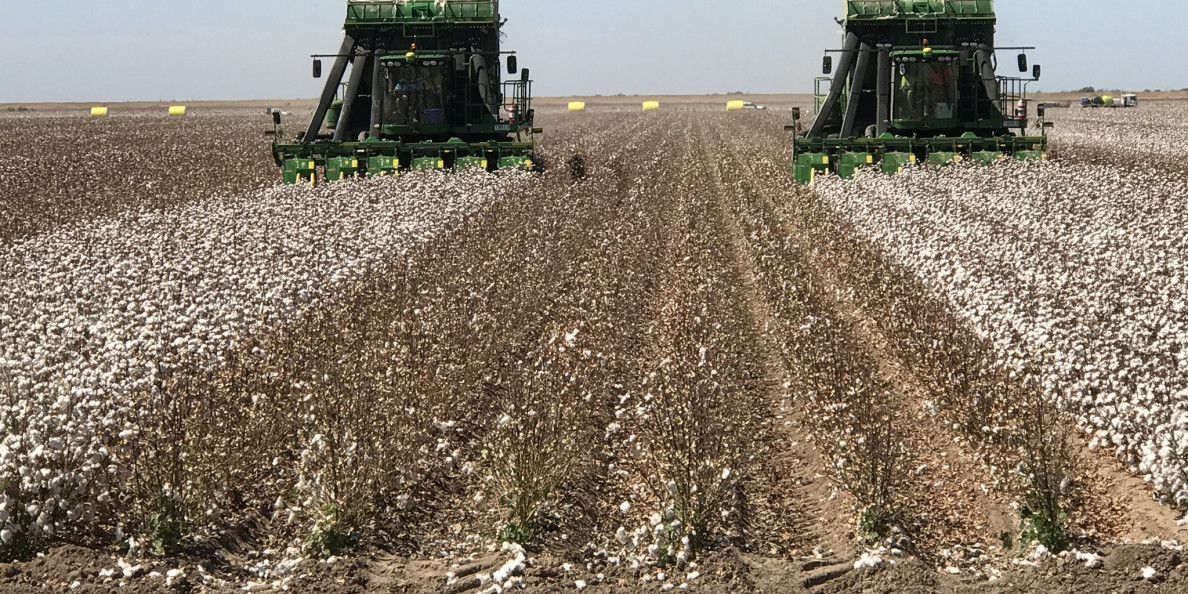International cotton prices moved dramatically lower during June, with both the Current and Forward A Indices falling back below the dollar mark (a threshold which was passed in May, for the first time since the 2011/12 season). The Indices both reached seasonal highs during the month, supported by a period of sustained firmness in New York. That was followed by a dramatic reversal, prompted by the resumption of trade hostilities between the United States and China, which had been in abeyance since a conciliatory meeting in late May. On June 18, the Customs Tariff Commission of the Chinese State Council confirmed that additional import duty of 25 percent would be levied on a raft of US products, worth roughly 50 billion dollars, in retaliation for measures imposed on Chinese imports by the US administration a few days earlier. [Duty covering 545 items, including cotton, are due to come into effect on July 6.] In response to these developments, December futures fell by over 900 points in just three sessions, largely erasing the gains accumulated during the rally that had begun in mid-May. By the end of the month, the Cotlook Indices stood at 93.25 cents for the 2017/18 season, and 94.55 for the next crop year.

The Forward 2018/19 A Index (reflecting cotton for shipment no earlier than October/November) moved to a premium over the Current Index in late May, and prices maintained that relationship throughout the next month, with the average differential between the Indices placed at around 230 cent points (Forward premium).
The huge volume of unfixed on-call purchases which had been in evidence during most of the year was reduced considerably, as outstanding fixations against the July contract were made during the collapse of prices. By late June, unfixed on-call contracts were at their lowest since mid-February, but remained historically very high.
Physical business has been mainly of a gap-filling nature, despite the dramatic decline in asking rates, as most spinners are thought to be covered through the third quarter. Generally, the market has begun to enter the summer doldrums, and spinners appear in wait-and-see mood, pending further pricing developments.
Perhaps unsurprisingly, import demand from China turned mainly to ‘outside’ growths such as Brazilian and Australian, whereas US had previously been the main focus. The fate of US shipments already en route to China remains unclear. During the week ended June 21, China’s US export sales commitments showed cancellations and destination changes amounting to roughly 67,000 statistical bales (480 lbs) of upland cotton for the current and 2018/19 seasons combined. Vietnam was the biggest destination for both seasons’ commitments, and also accounted for most of China’s destination switches. In this instance, China’s sustained investment in the Vietnam textile industry during recent years may allow the mill groups in question to spin US cotton in Vietnam and export their yarn for consumption by downstream factories in China.

In total, US export sales were by the week in question some 109 percent of USDA’s recently revised export forecast for the current season (of 16 million 480 lb bales). Commitments for the following season were over 5.7 million bales and those for shipment in 2019/20 are already in excess of one million (of which nearly 45 percent are destined for China).
Daily turnover on China’s State Reserve auctions dipped from the consecutive 100 percent sales that were in evidence during the previous month, falling to 28 percent of the catalogue at its lowest. The catalyst for this was ostensibly the exclusion of merchants from participating in the auctions (to quell a price rally which caused market instability in late May), as well as the announcement of 800,000 tonnes of ‘sliding scale’ import quota, also interpreted as a measure to calm an overheating local futures market. However, although the volume held in State Reserve warehouses had (since the beginning of this year’s auction series in early March) been reduced by some 1.4 million tonnes by the end of the month, the supply situation in China remains adequate for the foreseeable future. Official sources have made clear their willingness to extend the auction period (like last year) to the end of September, rather than the end of August, by which time the movement of the local crop will be imminent, and the additional import quota will no doubt have been allocated.

Cotlook’s figures for Chinese supply and demand in 2018/19 were unchanged during June, at 5,370,000 and 8,900,000, respectively. The earlier references to poor weather in major growing region Xinjiang are thought to have been overstated, and local sources describe crop progress as ‘normal’.
Less confidence is in evidence with regard to the production outlook in the United States. Although the USDA’s Planted Acreage report at the end of June showed a modest increase in estimated 2018/19 US plantings (compared to the March Prospective Plantings figure), the outlook for dryland cotton in the key West Texas producing region remains precarious. June saw only one significant rain event in the region. The moisture was welcome, but unevenly distributed, and any rainfall since then has been insufficient to improve the outlook. In consequence, forecasts of abandonment show an upward bias.
In the rest of the world, our estimate of global production has been lowered by 58,000 tonnes, to 25,994,000. A major reduction was made for Australia, prompted by concerns regarding water availability, while a shortfall of plantings in Pakistan’s Sindh province informed a change for that origin. The reduction was partially offset by a considerable increase for Brazil, however, where producers, who may well achieve record output from the 2017/18 crop, are already planning to increase next season’s planted area.
World consumption was also lowered, to 26,711,000 tonnes, owing to a number of changes for smaller markets. Hence, global stock levels are expected to decline by 717,000 tonnes at the end of 2018/19, with a reduction in China continuing to be partially offset by an increase for the rest of the world.



